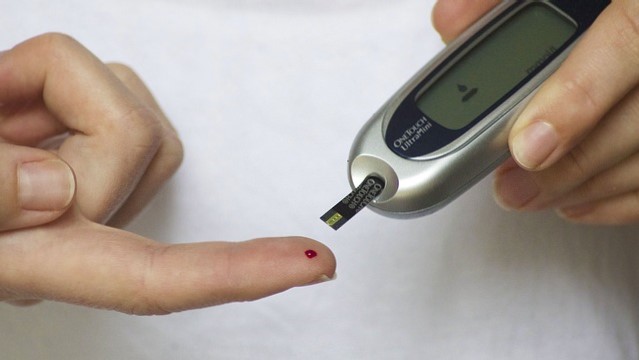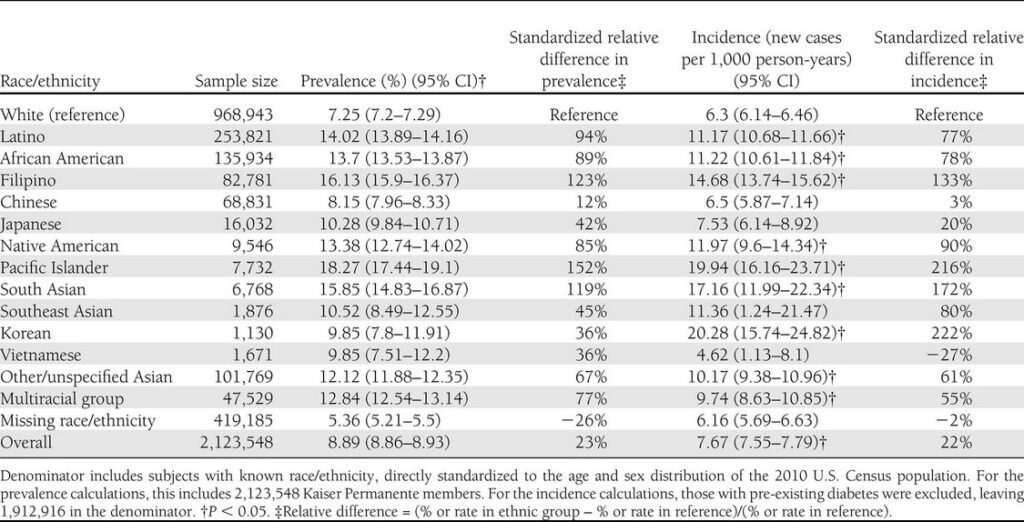Family, Health, Resources
Overweight for Asian Americans begin at a BMI of 23 vs. 25 for most Americans
Did you know that there is a separate Body Mass Index (BMI) for Asian Americans? While not perfect, BMI is a measure of body fat for most adults and a screening tool for overweight and obesity. Asian Americans have higher prevalence for diabetes than non-Hispanic Whites at lower body weights. Our reality is that 1 in 2 Asian Americans will develop diabetes or prediabetes in our lifetime. South Asians, Filipinos and Pacific Islanders are most at risk. Asian American men have higher risk than Asian American women.

Did you know that there is a separate Body Mass Index (BMI) for Asian Americans? While not perfect, BMI is a measure of body fat for most adults and a screening tool for overweight and obesity. Asian Americans have a 60% higher prevalence of diabetes than non-Hispanic Whites.
More than half of Asian Americans with diabetes are undiagnosed, such that the American Diabetes Association (ADA), National Institutes of Health (NIH), and the Centers for Disease Control and Prevention (CDC) all recommend for Asian Americans to screen for diabetes beginning at a BMI of 23. This means that for an Asian female who is 5 feet 2 inches tall, she should be screened for diabetes if she weighed 126 pounds or heavier.
Currently, half of all Asian Americans adults, or 8.7 million, have diabetes (15%) or prediabetes (34%). Either we have these conditions or know of someone who has these conditions.
High prevalence of prediabetes and diabetes
What is diabetes? Diabetes is a chronic health condition that affects how our body turns food into energy and occurs when our blood glucose or blood sugar is too high. Around 133 million or 1 in 3 Americans have either prediabetes or diabetes, but for Asian Americans 1 in 2 will develop prediabetes or diabetes in our lifetime. (Prediabetes is where our blood sugar levels are higher than normal but not high yet enough to be diagnosed as type 2 diabetes.)
Currently, half of all Asian Americans adults, or 8.7 million, have diabetes (15%) or prediabetes (34%). A sobering figure – either we have these conditions or know of someone who has these conditions.
Prevalence also differ by ethnicity and gender
Much of the available diabetes literature and research are geared for White Americans. Though limited, newer studies are disaggregating by race and other factors. A recent study by researchers from Northwestern University Feinberg School of Medicine, found that all major racial and ethnic minority groups develop diabetes at lower body weights than non-Hispanic White adults – it was most pronounced for Asian Americans. As a result, Asian Americans are the most likely racial group to be missed in the 2021 guidelines for prediabetes and diabetes screening.
Prior studies found diabetes prevalence differ by ethnicity and gender:
- South Asians, Filipinos, and Pacific Islanders are most at risk
- East Asians still face higher risk compared to non-Hispanic Whites
- Asian American men have higher risk than Asian American women

Why Asian Americans have higher diabetes risk
According to experts, the higher rate of diabetes in Asian Americans result from a combination of genetic and environmental influences.
Genetically, experts found that Asian Americans tend to have higher fat distributions, more visceral fat (fat that is deep in our belly wrapped around our organs), and lower muscle mass than other racial groups.
Environmentally, immigrating to the U.S. westernizes our gut biome. For instance, the rate of diabetes in Chinese Americans is higher than the rate for the Chinese living in rural China. Studies also show that rates of diabetes are higher in Japanese Americans living in the U.S. compared to Japanese living in Japan.
According to experts, the higher rate of diabetes in Asian Americans result from a combination of genetic and environmental influences.
Don’t forget about our waist circumference
Sometimes even if our BMI is within a healthy range having too much fat around the belly (think apple-shaped body), may put us at a higher risk. To address this, there are target waist circumferences for Asian Americans. The target measurement for waist circumference should be less than or equal to 35.5 in (90 cm) for Asian men and 31.5 in (80 cm) for Asian women.
Importance of diabetes screening
More than half of Asian Americans with type 2 diabetes, and even more with prediabetes, are undiagnosed. There is not enough awareness for Asian Americans and providers to screen at a lower BMI for Asians. So, on our next annual exam or when we see our doctor, it would be helpful to get screened or talk to our doctor about getting screened. Diabetes can be preventable and successfully managed.
Take Action – Research/Surveys
Our Health study to understand cardiovascular disease risk in South Asians
CARE registry to give AANHPI communities a voice in health research
Helpful Resources
AADI Screen at 23 (Joselin Diabetes: Asian American Diabetes Initiative)
Differences in the Age of Diagnosis of Diabetes in Asian American Ethnic Groups: The National Health Interview Survey (NHIS), 2006–2018 (Journal of Asian Health)
Prevalence of prediabetes and diabetes vary by ethnicity among U.S. Asian adults at healthy weight, overweight, and obesity ranges: an electronic health record study (BMC Public Health)
Get a monthly dose of our latest insights!


About
myasianvoice
At MyAsianVoice, we connect Asian Americans to surveys and research to bridge the Asian data gap.
Join our growing respondent list >>
